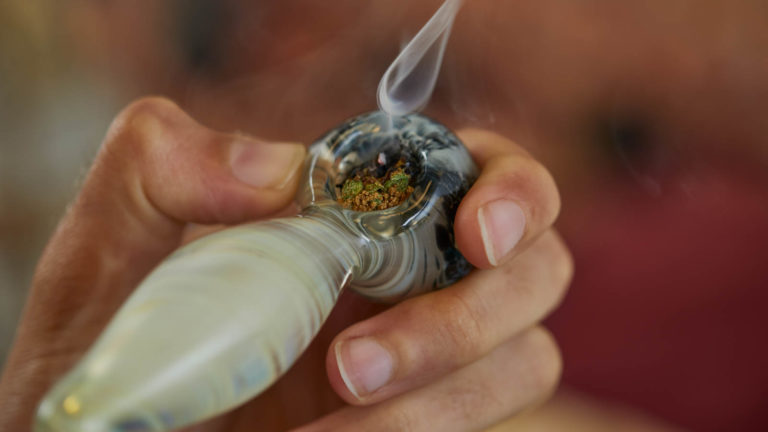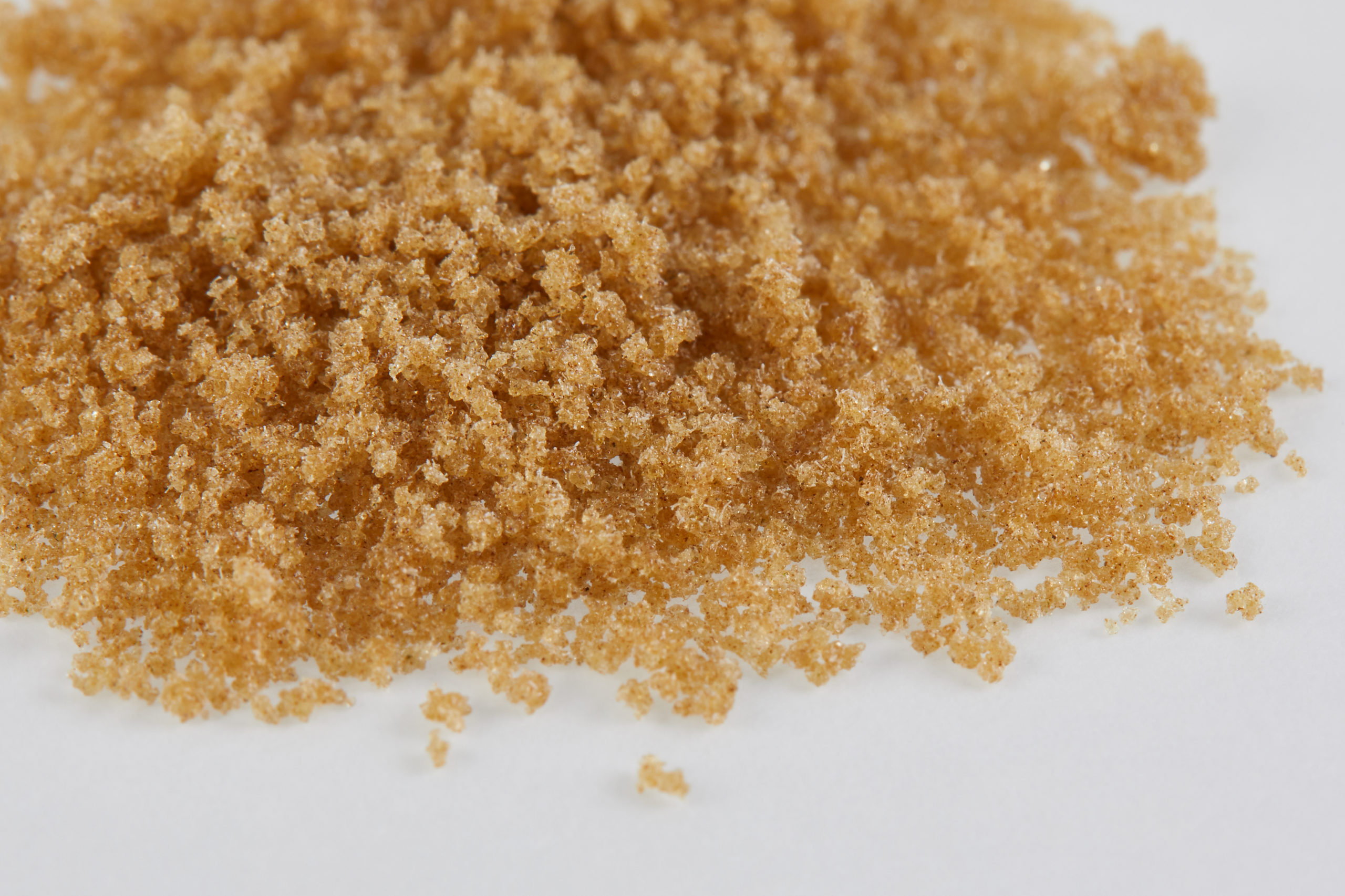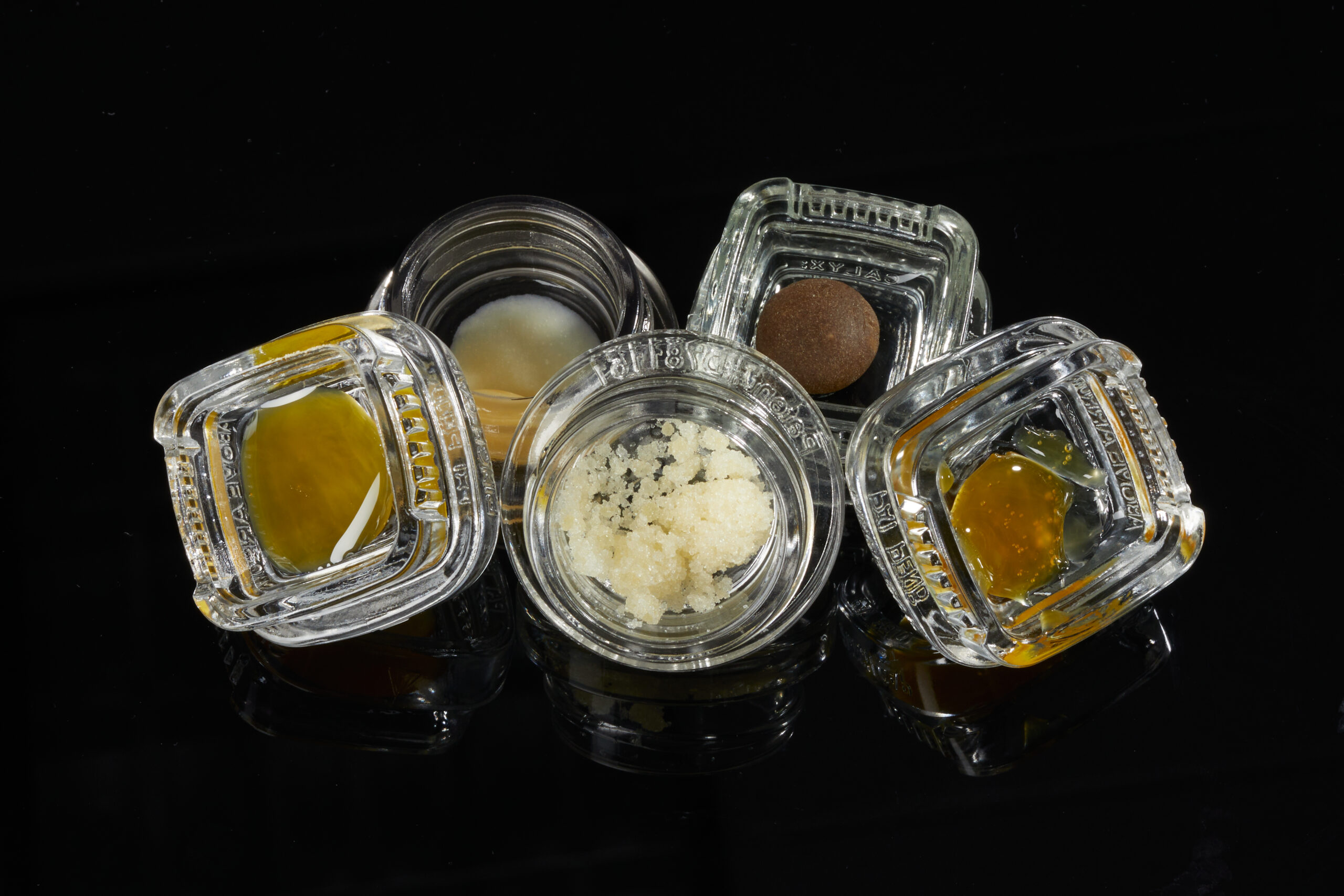Ice water hash, also known as bubble hash, is a solventless cannabis concentrate made by separating trichome heads from the plant using cold water, ice, and a series of fine mesh bags with different micron sizes.
This method of hash making is one of the most honest expressions of the cannabis plant, preserving the purity of the resin and delivering a flavorful, potent, and full-spectrum experience without the use of chemical solvents.
As Alice Reis explains in the video above, the ice water hash process requires patience and precision.
Unlike solvent-based extracts that rely on hydrocarbons like butane or alcohol, ice water hash is a mechanical separation process that depends on precision, patience, and cold conditions. It remains one of the most respected forms of hashish because it's difficult to produce and requires pristine starting material to yield high-quality results. Fire in, fire out.
Why is ice water hash considered solventless?
You might wonder: How can it be called solventless if it uses water?
The answer lies in how the water behaves. Although water is a universal solvent, it does not act as one in this context. The water doesn't chemically dissolve or extract compounds from the plant. Instead, the cold water acts as a carrier, helping whole, intact trichome heads detach from the plant and pass through a series of mesh sieves.
This is a physical separation process, not a chemical one, which is why ice water extraction is considered a solventless method.
Types of ice water hash you'll find
 Photo by: Gina Coleman/Weedmaps
Photo by: Gina Coleman/WeedmapsImage lightbox

You'll find different types of ice water hash at dispensaries. Each type represents different segments of the cannabis market:
Unpressed hash
Most people buy this — it makes up more than half of the concentrate market. It's loose and powdery, perfect for sprinkling on bowls or mixing into joints. At $20-30/gram, it's the most budget-friendly way to try ice water hash. Brands like Nasha make quality unpressed hash that won't break the bank.
Full melt hash
This is the premium stuff that serious dabbers go for. This 5–6 star hash melts completely into oil when you dab it. Brands like 710 Labs make this high-end product, and you'll pay premium prices for the purity and potency.
Pressed hash
Someone's taken ice water hash or dry sift hash and compressed it into shapes, often spheres. The industry calls this pressed hash (also called temple ball, a term and method with its own history). It's a traditional way to store and handle hash.
Piattella
This is the artisanal option — cold-cured ice water hash with a butter-like texture made from fresh-frozen cannabis buds. Only a handful of brands make this specialty product, so expect to pay accordingly. It is also spelled "piatella.”
A brief history of ice water hash
Ice water hash is a modern refinement of traditional hash-making methods like dry sift hash and hand-rubbed charas. However, the evolution of the technique we know today began with a handful of innovators in the late 20th century.
In the 1980s, Skunkman Sam (David Watson) experimented with water-based resin separation, realizing that trichome heads sink while most plant matter floats. His process introduced a new path for solventless extraction using ice water. He even took out an ad in High Times Magazine in 1987, offering secret tips for water extraction methods at home.
Around the same time, Dutch cannabis figure Mila Jansen, affectionately known as the Queen of Hash, had a breakthrough idea. While observing her clothes tumble in the washing machine, she wondered: “What if this same motion could be used to separate trichomes from plant material?” That spark of insight led her to invent the first mechanized hash washing machine, later known as the Pollinator. Her invention transformed the process, making it more efficient, scalable, and accessible to hash makers worldwide.
By the late 1990s, Marcus “Bubbleman” Richardson brought even more structure to the process with the Bubble Bags, a multi-bag system using different micron filters to isolate trichomes by size. His contribution helped hash makers dial in the process and consistently improve quality.
Mila, Skunkman, and Bubbleman laid the foundation for today's solventless movement.
How to make ice water hash
 Photo by: Gina Coleman/Weedmaps
Photo by: Gina Coleman/WeedmapsImage lightbox

Making bubble hash requires isolating the trichome glands from the cannabis plant to create hash that bubbles when heated up. Any plant material that is not removed reduces the ability to bubble and, therefore, reduces the quality of the final product.
Like any artisanal process, there isn't a single way to make ice water hash. Every hash maker has their technique, tools, and preferences, which makes each batch unique. Here's one of the ways Alice from Wooksauce Winery does it at home:
This method focuses on small-batch quality, clean equipment, and cold-room care — perfect for people who want to craft high-grade hash on a personal scale.
Step 1: Gather your materials
- 5 to 8 filter bags (from 25μ to 220μ)
- Two clean, food-safe buckets
- Reverse osmosis (RO) water and clean ice
- Fresh frozen cannabis (or high-quality cured flower)
- BPA-free stirring paddle or gentle hash washing machine
- Cold room (ideal temp: 50°F or lower)
- Freeze dryer, frost-free freezer, or a microplane with an airflow setup if air-drying
Step 2: Set up your filter bags
Line your collection bucket with the filter bags, starting with the smallest micron size at the bottom (25μ or 45μ) and stacking up to the largest on top (160μ or 220μ).
Step 3: Prepare the wash
In your agitation bucket:
- Alternate layers of ice → cannabis → ice, finishing with a top layer of ice
- Add just enough cold RO water to allow movement, without overflowing
- Let the mixture sit for 20 minutes to fully chill before stirring
Step 4: Agitate gently
- Stir with circular, gentle motions for 4–6 minutes
- Avoid whipping or over-agitating — you want to remove trichome heads, not break down the plant
- For additional washes, increase the stir time slightly with each round
Step 5: Filter and collect
- Pour your wash into the bucket lined with filter bags
- Let the water drain slowly through each micron layer
- Scoop the resin collected on each screen with a cold stainless steel spoon or card
- Transfer each grade of hash onto parchment paper for drying
- Repeat steps 4 and 5 for as many washes as you'd like, increasing agitation time slightly with each cycle
Step 6: Dry thoroughly
- If you have a freeze dryer, run a full cycle with the hash spread thinly and evenly, similar in texture to pancake batter
- If air-drying, freeze the hash first, then microplane it over parchment and place it in a cold, dark room with airflow
- Flip and mix daily until completely dry
Proper drying is essential for preserving flavor, preventing mold, and maintaining melt quality.
What can you make from ice water hash?
Ice water hash isn't just a product. It's a starting point for various solventless concentrates and artisanal formats. Depending on how it's dried, cured, and processed, you can produce everything from unpressed loose resin to pressed temple balls, Piattella hash (cold-cured in sealed glass for weeks), or simply enjoy it as six-star full melt.
For those working with mid-grade hash, it can also be pressed into rosin, offering a shelf-stable, dab-friendly extract. Each technique brings out different expressions of the resin: flavor, texture, melt, and potency.
How to use ice water hash
 Photo by: Gina Coleman/Weedmaps
Photo by: Gina Coleman/WeedmapsImage lightbox

One of the most interesting things about ice water hash is that how you use it depends entirely on its melt quality.
Here's a breakdown of the most common methods of consumption based on how clean your hash is.
1. Dabbing or vaporizing (recommended for full melt / 5–6 star hash)
This is the best way to experience full melt ice water hash, as it fully preserves the terpenes and delivers the smoothest effects.
- Use a clean quartz banger or vaporizer designed for concentrates
- Heat to a low temperature (between 480°F and 530°F), then let it cool slightly before applying the hash
- Full melt will bubble, sizzle, and melt into an oily puddle with little to no residue
Tip: Always clean your banger or vapor path between uses to avoid flavor contamination and carbon buildup.
2. Topping flower or mixing with tobacco (recommended for 1–3 star hash)
Lower melt grades that don't fully liquefy still have value and can boost potency in traditional ways.
- Sprinkle hash over ground flower before rolling a joint or packing a bowl
- In many parts of the world, hash is commonly mixed with tobacco and smoked in a spliff
- Expect more physical, heavy effects and a slightly harsher burn, depending on purity
Tip: Avoid using full melt hash this way. It's too oily and may cause your joints to clog or run.
3. Edibles (any grade, but especially lower-grade hash)
Hash that isn't ideal for dabbing can still be turned into a potent edible.
- Be sure to decarboxylate it before infusing — this activates the cannabinoids
- Ice water hash can be mixed into butter, coconut oil, or other fats for cooking
- Works well for people looking for longer-lasting effects and a smoke-free experience
4. Pressing into rosin (3–5 star hash)
If your hash is in the mid-melt range — not quite full melt, but not heavily contaminated either — it can be pressed into hash rosin for cleaner consumption.
- Use a rosin press at low temps (160°F–190°F) and minimal pressure
- Hash rosin is easier to store, stable at room temperature, and great for dabbing or vaping
Note: This is technically a second filtration process, and while it's popular among solventless makers, it deserves its own in-depth guide, so we'll save that for another article.
The star rating system: how we grade ice water hash
The quality of ice water hash is generally measured by how well it melts. Since measuring quality by micron sizes presents too many variables, hash makers use a star rating system to grade hash quality more accurately. While no universal system exists, the six-star rating system is the most popular amongst hash makers.
The six-star system is a widely accepted (though informal) method to describe the melt quality of ice water hash:
- 1–2 stars: Food-grade. Contains plant contaminants. Best for edibles or mixing with flower.
- 3–4 stars: Mid-grade. May bubble slightly but leaves residue. It can be used for vaping or pressing into rosin.
- 5–6 stars: Full melt. Bubbles and melts cleanly into oil. Best for dabbing.
The term “half melt” is a casual descriptor, not an official category. What matters most is how well the resin melts and how clean it tastes and looks.
Ice water hash represents one of the purest and most intentional ways to connect with the cannabis plant. It blends tradition with technique, requiring care, clean inputs, and a deep respect for the resin.
Whether you're dabbing six-star full melt, sprinkling hash on a joint, or pressing it into rosin, the process starts the same — with water, ice, and a commitment to quality. As solventless grows, ice water hash remains at the center of that evolution.
FAQ: Ice water hash
1. What's the difference between ice water hash and bubble hash?
There's no difference — they're two names for the same thing. “Bubble hash” is a nickname that comes from the way high-quality hash bubbles and melts when heated.
2. Why is it called solventless if it uses water?
Great question. Even though water is a universal solvent, it doesn't chemically dissolve anything in this process — it simply carries the intact trichome heads through the sieves. That's why ice water hash is considered a mechanical (not chemical) separation and remains solventless.
3. Can I make ice water hash with cured flower, or do I need fresh frozen?
You can use both. Fresh frozen material tends to yield more terpene-rich, flavorful hash, while cured flower can still produce excellent results, especially for personal use. Just make sure your material is clean and trichome-rich.
4. What's a “full melt,” and how do I know if I have one?
A full melt is a hash that melts completely into oil when dabbed, leaving little to no residue. You'll know you have one if it bubbles, sizzles, and leaves behind a clear puddle instead of char. It usually comes from 5–6 star quality hash made with great material and technique.
5. Do I need a freeze dryer to make quality ice water hash?
A freeze dryer is very helpful, especially for preserving terpene content and ensuring fast, clean drying. But if you don't have one, you can still make great hash with proper microplaning and a cold, well-ventilated drying setup — it just requires more care and time.
6. Can I smoke hash that isn't full melt?
Yes! Hash that isn't full melt can still be sprinkled on flower, mixed with tobacco, or infused into edibles. Avoid dabbing low-melt hash — it may leave residue and won't offer the cleanest experience.
7. What's the best way to store ice water hash?
Keep your hash in a cold, dark, and airtight environment — ideally a fridge set between 35–45°F.
If it's full melt hash, keep it in the freezer.
To preserve flavor and melt, use glass jars or silicone-free containers for long-term storage and avoid excess air exposure.



